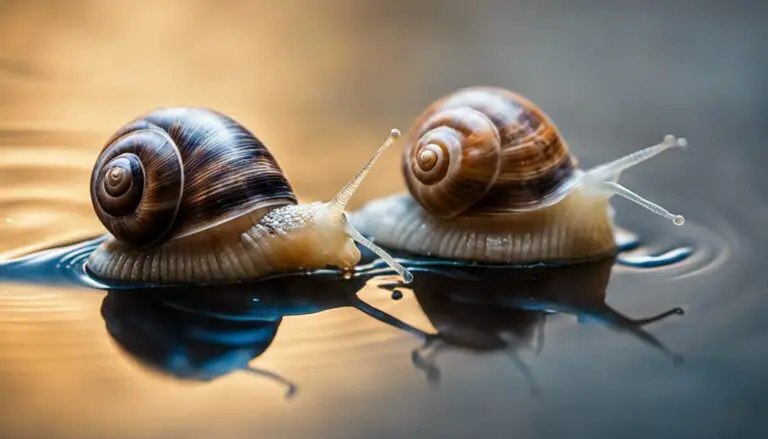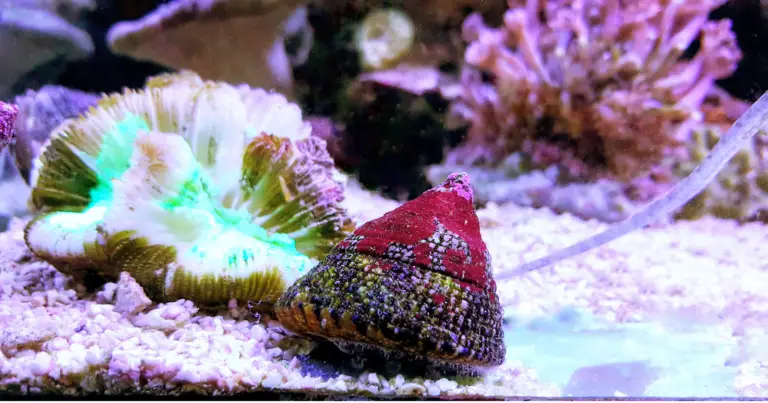Are Snails Nocturnal?
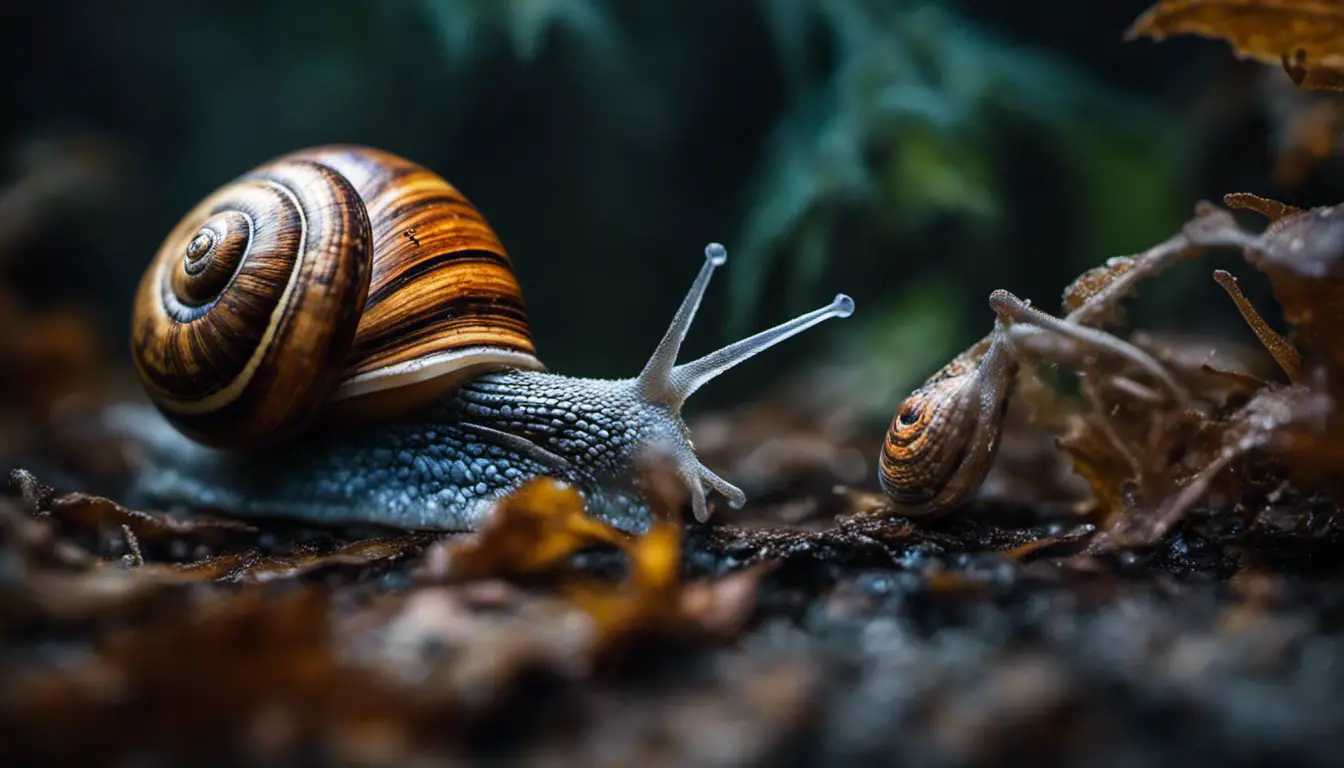
Snails are fascinating creatures that have captured the interest of people for years. One question that many have asked is, Are Snails Nocturnal? Nocturnal animals are mainly active at night, while diurnal animals are active during the day. Understanding snails’ sleep patterns and activity can help you appreciate these intriguing gastropods even more.

Snails can be active during the day, but they are predominantly nocturnal. Their sleep cycle is unique, not adhering to the typical 24-hour day and night cycle humans are accustomed to. Instead, snails sleep in a cycle that lasts two to three days, consisting of bouts of sleep that last roughly 25 minutes, occurring every 13 to 15 hours. This interesting sleep behavior explains why they are mainly active at night, seeking food and staying safe from daytime predators.
So, next time you encounter a snail after a night of rainfall, it’s helpful to know they are more active during nighttime. This knowledge not only gives you insight into their behavior, but it’s also a great conversation starter for fellow nature enthusiasts.
Contents
Table of Contents
Understanding Snails
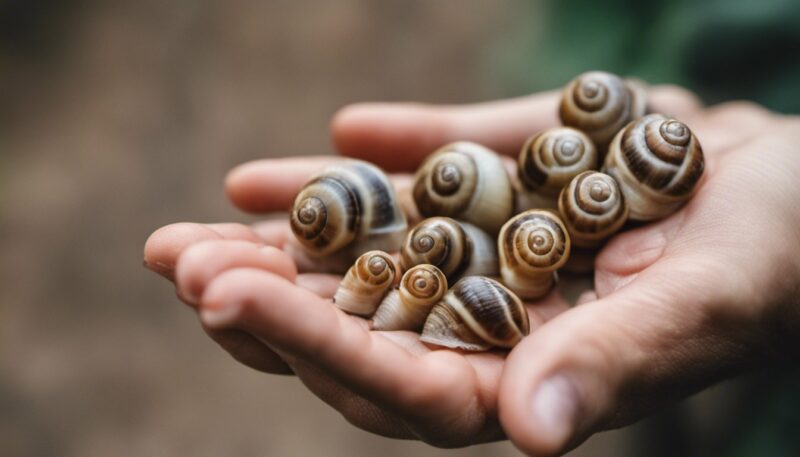
Snails are fascinating creatures in Gastropoda, part of the phylum Mollusca. They come in various sizes and can be found in different environments, such as land, sea, and freshwater. In this article, you’ll learn about snails’ characteristics and unique features.
There are thousands of snail species, each with their unique features. Like the common garden snail (Cornu aspersum, previously known as Helix aspersa), land snails are often found in gardens and parks. On the other hand, sea snails live in marine environments, while freshwater snails, like pond snails, thrive in lakes, rivers, and ponds.
Regardless of their habitat, snails are easily recognizable by their coiled shells, which come in various patterns and colors. These shells protect the snail and serve as their home, providing shelter from predators and harsh environmental conditions.
One characteristic that sets snails apart from other mollusks is their tentacles. The number of tentacles varies depending on the species, with some having two (one pair) and others having four (two pairs). The larger tentacles are used for sensing their environment, while the smaller pair is used for smelling and tasting.
Snails exhibit a unique trait regarding their reproductive organs: many species are hermaphroditic. This means they possess both male and female reproductive organs and can reproduce as a male and a female. However, not all species are hermaphroditic, and some still require a partner for reproduction.
As you explore the world of snails, you’ll find these gastropods continue to offer interesting facts and surprises. Their unique features, such as their shells, tentacles, and reproductive abilities, contribute to their endless intrigue. So, the next time you encounter a snail in your garden, a pond, or even at the beach, you understand these captivating creatures better.
Snail Environments
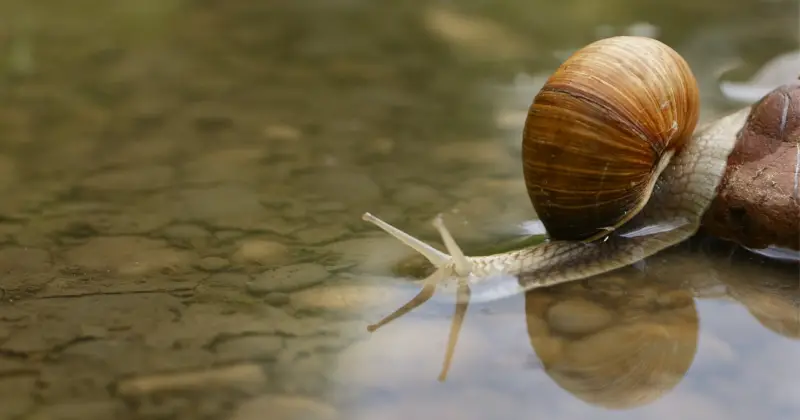
When creating a suitable environment for snails, there are several factors to consider that will keep them healthy and active. Understanding these factors ensures a comfortable living space and contributes to their well-being.
Firstly, water plays a significant role in a snail’s life. Ensuring access to a safe water source is crucial for their hydration and maintaining the moisture they require in their environment. The presence of water is vital for their mobility, and it helps to prevent their bodies from drying out.
Temperature is another important factor in a snail’s environment. Snails thrive in mild temperatures, generally between 60 and 80 degrees Fahrenheit (15 to 27 degrees Celsius). Avoid placing snails in extremely hot or cold areas, which can harm their health.
It’s best to house snails in areas with higher humidity levels to maintain the necessary moisture and humidity within their environment. This can be achieved by providing damp substrate layers, such as soil or leaves, within their living space. Humidity levels of 70-90% are recommended for most snail species.
Rain can provide moisture to their surroundings and encourage snail activity. During rainy periods, you might notice increased snail movement as they search for food or mates.
Gardens often provide an ideal environment for snails. With plenty of plants and available moisture, snails can find food, shelter, and moisture all in one place. Be mindful that some snails are considered pests and may damage plants in the garden.
In summary, proper care for snails involves paying attention to their needs for water, appropriate temperatures, moisture, humidity, and the right environment. Establishing and maintaining these conditions can provide a comfortable home for these fascinating creatures.
Habits of Snails
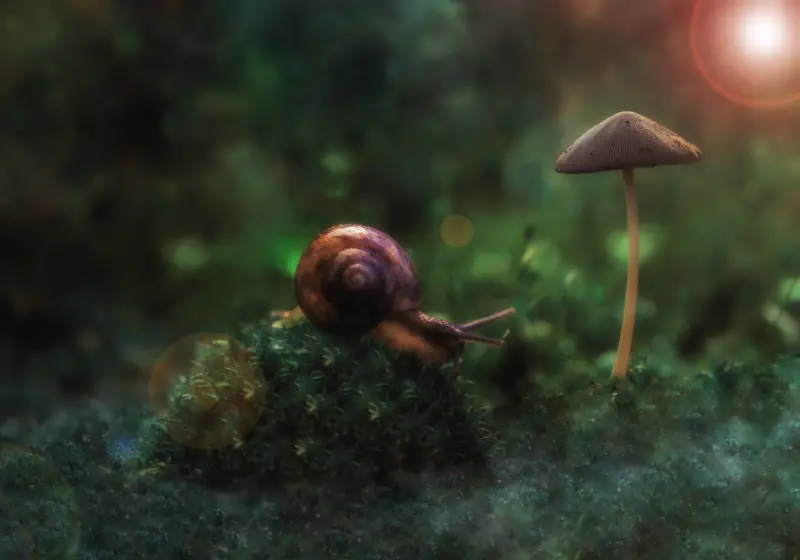
You might have noticed that snails appear more active during certain times of the day, directly related to their natural sleeping habits. Snails are predominantly nocturnal animals, meaning they are more active at night and tend to sleep during the day. Their nocturnal behavior allows them to conserve energy, as they need less to survive in low-light conditions source.
During their waking hours, snails engage in various activities such as searching for food, mating, and exploration. By doing these activities at night, they can avoid direct sunlight and prevent drying out, which is crucial for survival. Snails’ sleep and activity cycle is generally spread over 24 hours, with specific sleep patterns depending on their species and habitat preferences.
In addition to being nocturnal, snails can hibernate and estivate. Hibernate allows them to survive during periods of extreme cold, while estivation occurs in periods of severe heat or drought (source). These sleep habits enable snails to maintain the right balance of energy usage and conservation, ensuring they are well-adapted to their environment.
As you observe your snails, you’ll notice that their sleep behavior syncs up with day and night hours, which is also directly related to their nocturnal nature. Be sure to provide proper hiding places and a suitable environment for your snails to maintain their natural sleep patterns and stay healthy.
Snails and Overall Weather Impact
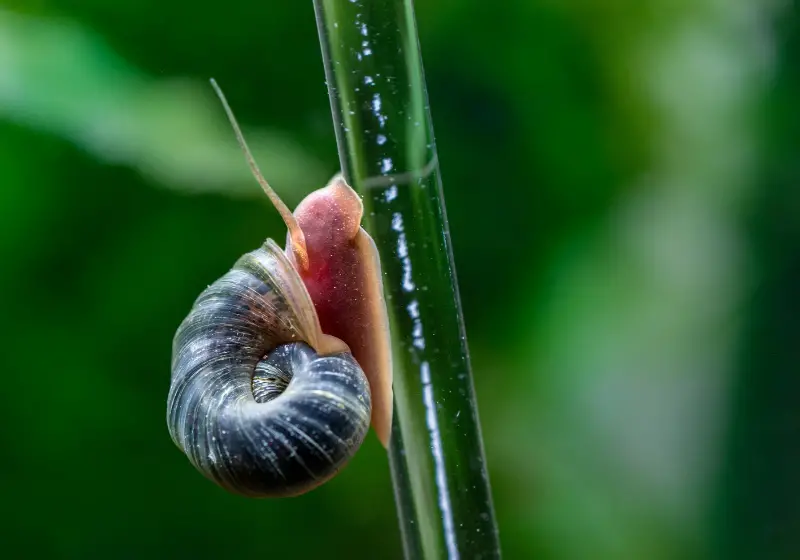
Snails, especially land snails, have a strong dependence on weather conditions, particularly when it comes to their activity levels. Snails are primarily nocturnal creatures and are most active during the night and rainy weather. Rain provides a favorable environment with cooler temperatures and higher humidity levels, essential for snails to move and protect their bodies from desiccation.
During summer, you may notice fewer snails because the hot and dry conditions are not suitable for them. They become less active and may hide under rocks, leaf litter, or burrow into the soil to avoid desiccation and conserve moisture. In contrast, the winter season brings relatively cooler temperatures and damp conditions, promoting more snail activity, especially when it rains.
When dealing with land snails in your garden or observing them in nature, it’s important to understand their preferences and behaviors related to weather. This knowledge can help you better manage their presence in your garden or appreciate their fascinating lifestyle.
In summary, land snails are nocturnal creatures that rely strongly on weather conditions for their activity levels. Rainy days and increased humidity make for ideal circumstances, while hot and dry summer days can lead to a decrease in their activity. By understanding these factors, you can better appreciate and manage the presence of snails in their natural habitat or your garden.
Snails and Food Source
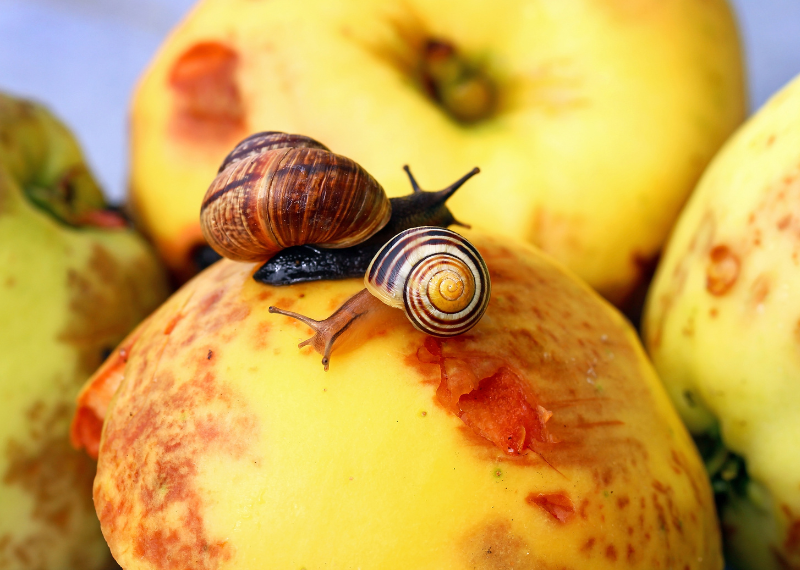
Understanding their food source can be helpful for a gardener or someone interested in snails. Snails, being nocturnal creatures, primarily feed at night. This is when they look for food in your garden or surrounding areas.
Snails are known to feed on various plants, both dead and alive. They are considered as pests because they can cause damage to your garden plants, especially those which are soft and tender. Beets and roses are common targets for snails, as they enjoy eating their leaves and petals, leaving behind a trail of destruction.
One way to prevent snails from damaging your plants is by using plant feeders. Plant feeders can help deter snails by providing an additional food source that they find more appealing, such as lettuce or cabbage leaves. Placing plant feeders around your garden can distract snails from your valuable plants.
In summary, remember that:
- Snails are nocturnal and primarily feed at night.
- They feed on plants, both dead and alive, and can cause damage to your garden.
- Beets and roses are especially vulnerable to snail attacks.
- Using plant feeders can help deter snails and protect your garden plants.
It’s essential to keep these points in mind while managing snails in your gardening endeavors. You can protect your beloved plants and enjoy a thriving garden.
Reproduction and Growth in Snails

Snails’ fascinating reproductive process sets them apart from many other creatures. Most land snails are hermaphrodites, possessing both male and female reproductive organs. This unique characteristic increases their chances of successful reproduction, as they can mate with almost any adult snail they encounter.
During mating, two snails combine and exchange sperm to fertilize each other’s eggs. The mating process can take several hours to complete, and it may involve interesting behaviors such as the use of love darts, which are calcium-based structures that some species use to inject hormones into their mate.
Once the eggs are fertilized, snails will lay them in moist soil or another suitable environment. The number of eggs can vary, with some species laying just a few while others laying hundreds. After an incubation period ranging from a few weeks to a couple of months, the eggs finally hatch, and the tiny hatchlings emerge.
The hatchlings, a miniature version of adult snails, start eating and growing immediately. They need to find food quickly, as they have limited energy reserves from their time inside the egg. During their growth, young snails will go through a series of stages, where they molt and replace their shells as they get bigger.
As the snails grow and develop, they become sexually mature and are ready to reproduce. Depending on the species, this stage usually occurs within a few months to a year of hatching. Once they reach sexual maturity, these snails continue the cycle of reproduction and growth for the next generation.
In summary, snail reproduction is a fascinating process characterized by their hermaphroditic nature, unique mating behaviors, and the ability to lay a variety of egg quantities. Their growth from hatchlings to adult snails is marked by successive molt stages, leading to sexual maturity and the continuation of the reproductive cycle.
Why Are Snails Nocturnal? Watch this
Defense Mechanisms in Snails
As you may know, snails possess several defense mechanisms that help protect them from various threats and predators. This section will explore some of these fascinating strategies snails employ to ensure survival.
One of the most notable defense mechanisms in snails is their hard shells. These shells provide both protection and camouflage, making it difficult for predators to break through or even spot the snail in its environment. The spiral shape of many snails’ shells also aids in providing additional strength and durability.
Mucus and the slime trail left behind by snails serve multiple purposes. The slippery mucus helps snails glide smoothly across surfaces and has some defensive properties. The slime can contain irritant chemicals that deter predators and make snails unpalatable. Additionally, some snails can produce particularly sticky mucus when threatened, enabling them to adhere to surfaces and making it difficult for predators to dislodge them.
Another clever defense mechanism some snails employ is the epiphragm, which acts as a barricade to seal the snail within its shell. This protective barrier, a layer of mucus that hardens into a membranous structure, allows snails to defend themselves against dehydration and some predators by effectively “closing the door” on their shells. The epiphragm is a useful strategy for terrestrial snails exposed to dry conditions.
Many aquatic snails possess an additional structure called the operculum, a plate-like structure attached to the snail’s foot that acts like a door when it retracts into its shell. This offers extra protection, sealing the snail inside its shell and preventing access to waterborne predators.
In conclusion, snails have evolved various defense mechanisms, such as shells, mucus, slime trails, epiphragm, and operculum, to help them evade and deter environmental predators. These adaptations enable snails to be resilient creatures, capable of surviving in various conditions and habitats.
Snails in the Human Context
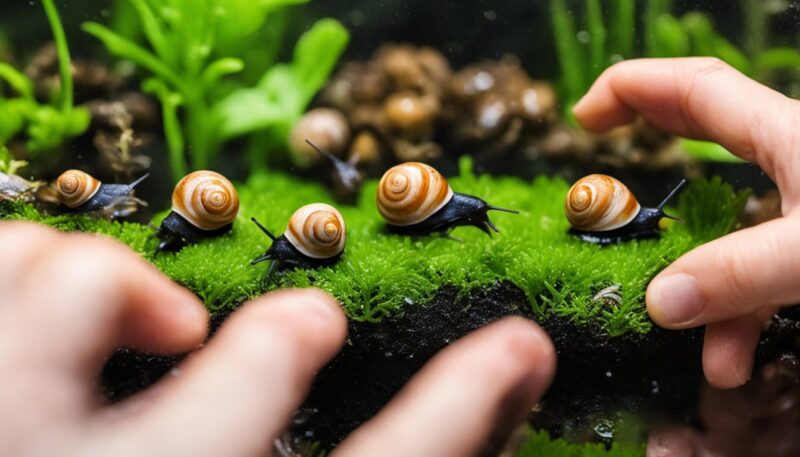
Snails hold a unique place in human activities and interests. As pets, they can provide fascinating glimpses into the world of invertebrates and serve as low-maintenance companions. Whether you choose terrestrial or aquatic species, they are relatively easy to care for as long as you provide the right environment, sustenance, and moisture.
Snails might be seen as pests in your garden, devouring seedlings and leaves leaving slime trails. Dealing with their presence requires a combination of natural deterrents and physical barriers. Some people even opt for introducing natural predators, like various birds and insects, to help control the snail population.
In terms of stock, snails have been bred for centuries, particularly as a source of escargot, a popular culinary delicacy. Snails like Helix pomatia and Helix aspersa are typically bred in large-scale snail farms to produce this French dish. The process of breeding, cultivating, and preparing snails for this purpose is known as heliciculture.
Escargot isn’t the only way humans consume snails. In some cultures, they serve as valuable sources of protein, minerals, and vitamins. It is worth noting that you should always handle and cook snails properly to ensure they are safe for consumption.
Aquarium snails play a crucial role in maintaining the balance of your aquarium’s ecosystem. They are natural scavengers, feeding on algae and other debris while helping to aerate the substrate. Always choose species compatible with the aquarium inhabitants to avoid conflicts or overpopulation issues.
Understanding the nuances of snails in various human contexts will increase your appreciation for these unique creatures and shed light on their roles in our everyday lives.
Interesting Facts about Snails
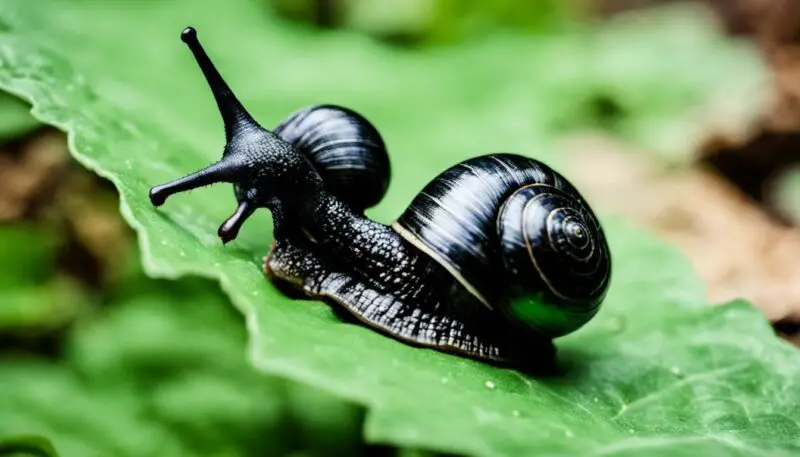
As you delve into the world of snails, you might be surprised by some fascinating facts about these slow-moving creatures. Snails are known for their sluggish pace, moving at only 0.5-0.8 inches per second.
What contributes to their slow movement are their unique features in anatomy and physiology. Snails have a radula, a specialized organ covered in thousands of tiny teeth that they use to grind and break up food.
Regarding breathing, land snails possess a lung for respiration, adding another interesting layer to their biology. Their life expectancy varies depending on their habitat; wild snails typically live for 3 to 7 years, whereas those in captivity can live up to 25 years.
Snails are also hermaphrodites, which possess both male and female reproductive organs. However, they still require a mate for reproduction. Another surprising fact is their sensitivity to salt, which can be lethal to them due to the dehydration it causes.
With regards to their growth, a snail’s shell size reflects its age, and they carry their shells from birth. As the snail grows, so does its shell, ensuring it has adequate protection throughout its life.
A lesser-known fact about snails is their unusual sleep cycle, which doesn’t align with a 24-hour day. Their sleep cycle lasts two to three days, with seven bouts lasting 25 minutes every 13 to 15 hours.
Lastly, snails have a notably low metabolism and heart rate, contributing to their slow pace and may explain their incredible ability to adjust their body temperature according to their environment.
In summary, snails are remarkable creatures with unique characteristics that make them intriguing research and observation subjects. As you explore more about snails, you’ll undoubtedly come across even more captivating details about these slow-moving marvels.
Safety and Conservation of Snails
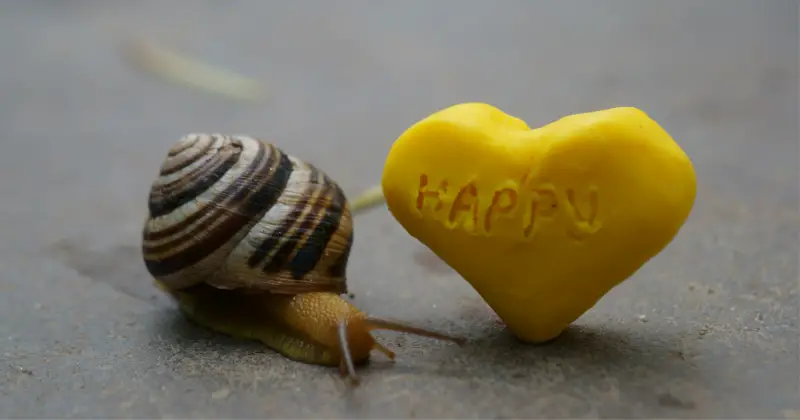
As a concerned individual, you play a vital role in the safety and conservation of snails. One of the reasons why snails turn to nocturnal habits is to protect themselves from predators such as birds, frogs, and mammals that are mostly active during that time.
By being active at night, snails can avoid some of these threats and carry out their essential activities in a safer environment. You can help protect snails by being mindful of their habitats and understanding their nocturnal nature.
Snails are essential to the food chain and ecosystem, contributing to a healthy environment. However, they face dangers that could lead to population decline or even extinction. Habitat loss and climate change, as well as the introduction of invasive species, can put pressure on snail populations. You must spread awareness about these threats and take action to preserve natural habitats, promote biodiversity, and prevent the extinction of snail species.
To facilitate the safety and conservation of snails, consider implementing some of the following strategies in your garden or property:
- Provide shelters: You can create shelters using rocks or logs to give snails hiding places during the day. This creates a more natural environment and helps them avoid predators.
- Use environmentally friendly pest control methods: Instead of using harmful chemicals, opt for organic or eco-friendly pest control methods that do not cause harm to snails and other beneficial organisms.
- Promote awareness: Educating others about the importance of snails and their roles in the ecosystem, and their nocturnal nature can garner support for their conservation.
By taking these steps, you positively contribute to the safety and conservation of snails and support the balance of the ecosystem they are part of. As nocturnal creatures, snails inherently face challenges, and your actions can help create a healthier environment for them to thrive in.
Snails Health and Diseases
As a snail enthusiast, you must be aware of the various health issues and diseases that can affect snails. This knowledge will help you in maintaining their health and ensuring their well-being.
One common health concern for snails is dehydration. Since snails are predominantly nocturnal, they prefer to stay in damp and dark environments during the day. However, they can lose water and dehydrate if their environment becomes too dry. To prevent this, you must provide adequate moisture in their habitat.
Another concern is parasitic infections. Snails can be hosts to a range of internal and external parasites. It is crucial to monitor your snails for changes in their behavior and appearance that may indicate a parasitic infection. Signs of a possible parasite problem include lethargy, weight loss, and changes in their shell. If you suspect a parasitic infection, consult a snail specialist immediately.
Bacterial and fungal infections can also affect snails. These infections may occur in their digestive tracts or affect their shells. Maintaining a clean environment for your snails is essential to minimize the risk of bacterial and fungal infections. If you notice a change in their appetite, shell quality, or any unusual discharge, it is important to seek professional advice.
Lastly, you should be cautious of potential poisoning. Snails are sensitive to chemicals like pesticides and fertilizers. It is essential to ensure their food sources and living environments are free from harmful chemicals. Ingesting such chemicals may cause severe health issues and be fatal to your snails.
By staying informed about snail health and diseases and providing an appropriate environment for them, you can support the well-being of your snail companions.
Authenticating Knowledge
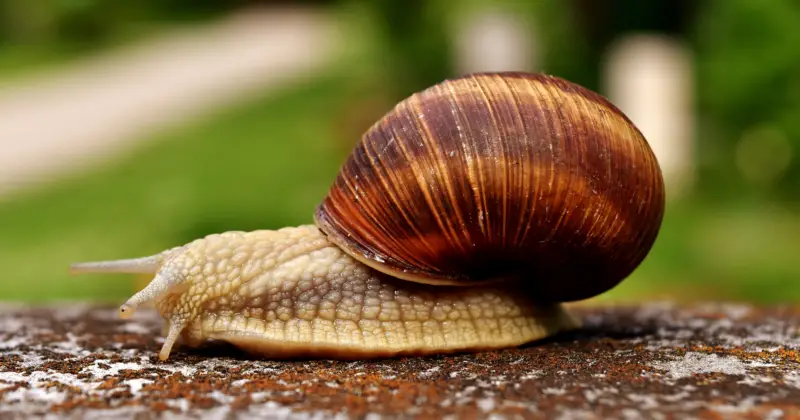
As an aspiring author or freelance writer diving into the world of snails, you are likely curious about their habits, particularly whether they are nocturnal. Your research should be based on validated sources, like the AZ Animals article authored by Janet F. Murray. This information was carefully reviewed by the AZ Animals editorial team, ensuring its accuracy and relevance.
Indeed, snails are nocturnal creatures that prefer to stay active at night. This behavior may be primarily observed to avoid predators and to find optimal temperatures and moisture levels for their survival. As you proceed with your writing, remember the importance of always fact-checking your sources before leveraging any information.
Learning about snails will open new doors for you as a writer, allowing you to explore fascinating details about their behavior. For instance, snails are unique among animals. They do not have a unified brain but possess a series of brainy ganglia that allow them to make complex decisions, even about feeding, with only two cells in their body. This information was derived from a reputable resource like Snail Farming World and can be valuable for your article.
Remember to maintain a confident yet neutral tone when elaborating your content. Your readers appreciate a clear and knowledgeable voice when learning about the fascinating world of snails. Moreover, always be open to feedback and constructive criticism, as this will help you improve your writing skills and enhance the credibility of your work.
To sum up, while exploring the nocturnal habits of snails, be sure to verify the accuracy and relevance of your sources, respect a confident and neutral tone in your writing, and always remain open to learning and incorporating feedback. By doing so, you’ll successfully convey valuable information to your audience and grow as an author or freelance writer.
Article Details: Are Snails Nocturnal

Snails exhibit fascinating sleep behaviors that have long captivated researchers. Most snails are nocturnal, meaning they are more active during the night and tend to rest or sleep during daylight hours.
You may have noticed snails retreating into their shells when they feel threatened or during the daytime. This protective mechanism allows them to conserve energy and stay safe from predators.
A study conducted on pond snails provides valuable insights into their unique sleep patterns. Their sleep occurs intermittently in a pattern that repeats every two to three days, which is quite different from the 24-hour cycle that most animals follow.
Pond snails experience approximately seven bouts of sleep lasting 21-23 minutes each over 13 hours. Interestingly, this sleep pattern is followed by 33-41 hours of activity before it repeats.
In terms of their daily routines, snails generally follow a consistent pattern:
- Nighttime Activity: They venture out of their shells to feed, mate, and explore their surroundings.
- Daytime Rest: Snails retreat into their shells and rest to conserve energy as the sun rises.
It’s worth noting that the precise sleep behaviors may vary depending on the specific snail species and factors such as temperature and humidity 1.
Remember, being knowledgeable about the habits of these intriguing creatures will enable you to appreciate them better and even care for them in various situations. Stay curious and continue expanding your understanding of the fascinating world of snails.
Frequently Asked Questions
Do snails sleep for long periods?
Snails have a unique sleep pattern spanning two to three days, with intermittent sleeping bouts. They tend to sleep for about 20-25 minutes at a time, with a total of 7 bouts spread over a 13 to 15-hour period. Afterward, they have an awake phase of around 30 to 41 hours before repeating the cycle.
What time of day are snails most active?
Generally, snails are nocturnal creatures, which means they are more active during the nighttime. However, as mentioned earlier, their activity patterns do not strictly follow a 24-hour day-night cycle but rather their unique sleep cycle.
Do different types of snails have different activity patterns?
There are various species of snails, and their activity patterns may vary slightly. However, most snails exhibit a nocturnal behavior and have a similar sleep cycle. Further research on specific types of snails may provide more insight into their activity patterns.
How do snails behave during the daytime?
Snails usually find a safe and moist spot to rest and hide from predators during daylight hours. They may also take advantage of their unique sleep pattern to sleep during the day, depending on where they are in their sleep-wake cycle.
Are aquarium snails active at night?
Aquarium snails, like most snail species, are also nocturnal. They tend to be more active during the night and may rest or sleep during the day. Their sleep-wake cycle is similar to that of other snails.
How does nocturnal behavior benefit snails?
Nocturnal behavior benefits snails as it helps them avoid predators and potential dangers during the day. Additionally, nighttime provides a cooler and more humid environment, which aids in preventing them from drying out. Overall, being active at night allows snails to forage for food, mate, and carry out other essential activities with reduced risks.


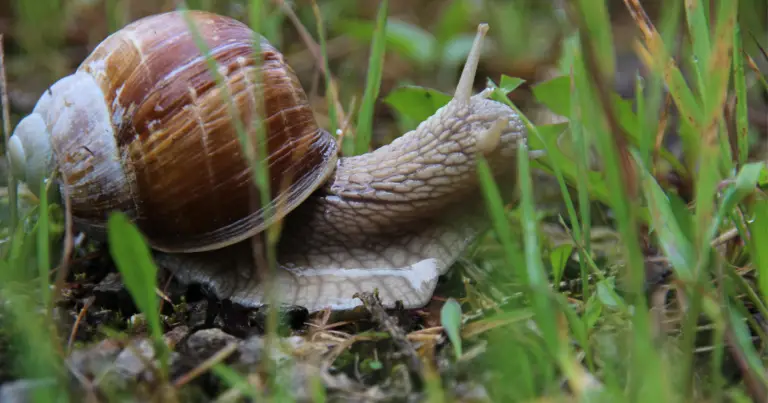
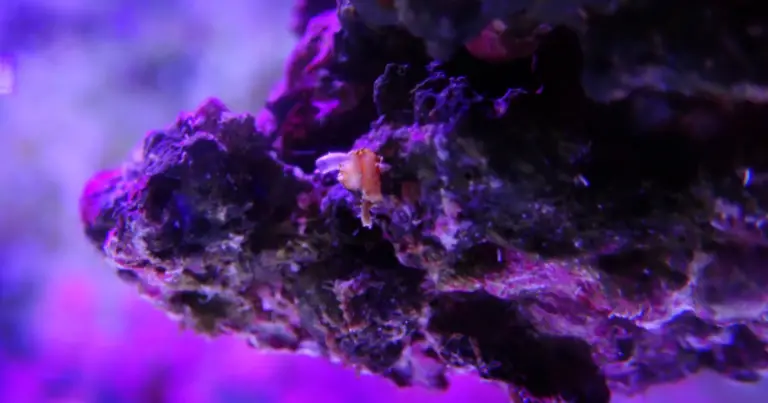
![Can Snails Swim? [Complete Answer]](https://allourcreatures.com/wp-content/uploads/2021/10/snails-swim-768x512.jpg)
